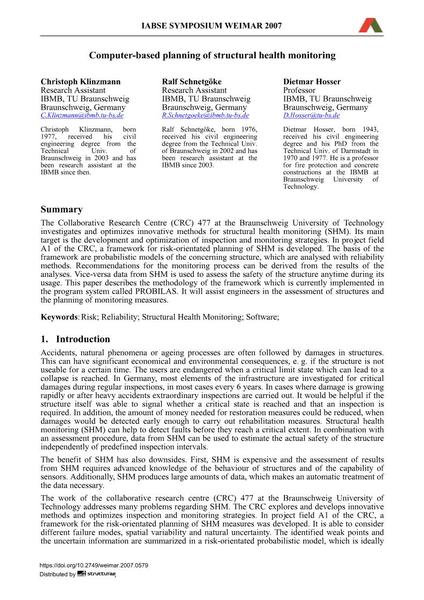Risk-orientaed computerized planning of structural health monitoring of infrastructure

|
|
|||||||||||
Bibliografische Angaben
| Autor(en): |
Christoph Klinzmann
Ralf Schnetgöke Dietmar Hosser |
||||
|---|---|---|---|---|---|
| Medium: | Tagungsbeitrag | ||||
| Sprache(n): | Englisch | ||||
| Tagung: | IABSE Symposium: Improving Infrastructure Worldwide, Weimar, Germany, 19-21 September 2007 | ||||
| Veröffentlicht in: | IABSE Symposium Weimar 2007 | ||||
|
|||||
| Seite(n): | 494-495 | ||||
| Anzahl der Seiten (im PDF): | 8 | ||||
| Jahr: | 2007 | ||||
| DOI: | 10.2749/weimar.2007.0579 | ||||
| Abstrakt: |
The Collaborative Research Centre (CRC) 477 at the Braunschweig University of Technology investigates and optimizes innovative methods for structural health monitoring (SHM). Its main target is the development and optimization of inspection and monitoring strategies. In project field A1 of the CRC, a framework for risk-orientated planning of SHM is developed. The basis of the framework are probabilistic models of the concerning structure, which are analysed with reliability methods. Recommendations for the monitoring process can be derived from the results of the analyses. Vice-versa data from SHM is used to assess the safety of the structure anytime during its usage. This paper describes the methodology of the framework which is currently implemented in the program system called PROBILAS. It will assist engineers in the assessment of structures and the planning of monitoring measures. |
||||
| Stichwörter: |
Zuverlässigkeit Risiko
|
||||
